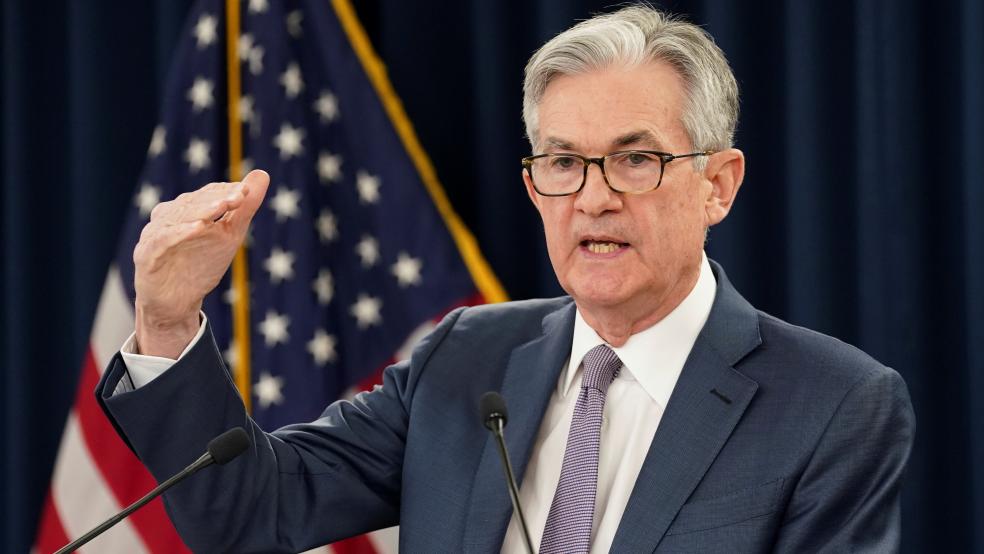The Federal Reserve on Wednesday raised its benchmark interest rate by three-quarters of a percentage point, to a range between 2.25% and 2.5%, maintaining its aggressive stance in its effort to bring red-hot inflation under control.
The rate hike was the second unusually large increase in a row, the first time that has occurred since Paul Volcker’s war against inflation in the 1980s. “What seemed unfathomable just six months ago – a 75-basis-point rate hike by the Federal Reserve – has now happened twice in a row,” says CNN’s Nicole Goodkind.
In a statement, the Fed’s Open Market Committee said that while some economic indicators such as consumer spending have “softened” in recent months, job growth is robust and inflation remains elevated due to an ongoing imbalance in supply and demand, exacerbated by the war in Ukraine. Given those conditions, the committee unanimously agreed that another large rate increase was warranted as the Fed pursues its target inflation rate of 2% over the long run.
How high will rates go? While the Fed’s latest rate hike was widely expected, there is less certainty about what lies ahead. At a press conference, Fed chief Jay Powell said he expects the Fed to raise rates again in the fall, though the size of future increases will depend on the economic data, with a likely endpoint of about 3.5% by December.
In a comment that sent stocks soaring on Wall Street, Powell said he could imagine smaller rate hikes in the coming months. “As the stance of monetary policy tightens further, it likely will become appropriate to slow the pace of increases while we assess how our cumulative policy adjustments are affecting the economy and inflation,” Powell said.
In those comments, Powell appeared to be providing “a dovish offset to the neo-hawkish statement” about how high rates might go, economist Joseph Brusuelas of the consulting firm RSM said. Investors are now pegging the September rate hike at half a percentage point.
Diane Swonk, chief economist at KPMG, said she expects to see rates continue to rise significantly. “The move to 2.25-2.5% is not enough to derail the inflation we are enduring, which means that Powell will have to prime the pump for more rate hikes in September, despite a sharp slowdown in growth,” she wrote in comments earlier Wednesday. “Our own analysis is that the Fed will have to raise rates to a 3.75% to 4% target range and that unemployment will nip at 6% before inflation cools back to the Fed’s 2% target.”
No recession, for now: Powell reiterated that the Fed is aiming for a soft landing, in which growth eases without going negative. He also said he doesn’t think the U.S. economy is currently in a recession, regardless of what’s announced in Thursday’s preliminary GDP report for the second quarter.
“While many are worried that the economy is verging on recession, Fed officials see the glass as half full, with the strong labor market allowing the economy to withstand rapid monetary tightening,” said Bloomberg economists Anna Wong, Yelena Shulyatyeva, Andrew Husby and Eliza Winger. At the same time, though, the economists warned that they see “little chance that the Fed will pause its rate hikes later this year, as markets currently expect.”
Other analysts agree with this less optimistic assessment of the outlook for next year. “We think a soft landing is unlikely,” economists at BlackRock said in a note. “Central banks today face sharp trade-offs between growth and inflation. We expect the Fed to change course only next year, when the economic effects of rate rises become clear.”
Stay tuned: Whatever course the economy takes in the coming months, the Fed on Wednesday appears to have achieved its goal of reassuring firms and investors about the state of the economy, while leaving itself plenty of room for maneuvering in the future, says economist Paul Krugman. “The Fed's actions and words today were sublimely boring, and I mean that in the best way,” he wrote. “No surprise on policy, no future commitments that will hinder its ability to ‘adjust the stance of monetary policy as appropriate.’ The next meeting may be more interesting.”




